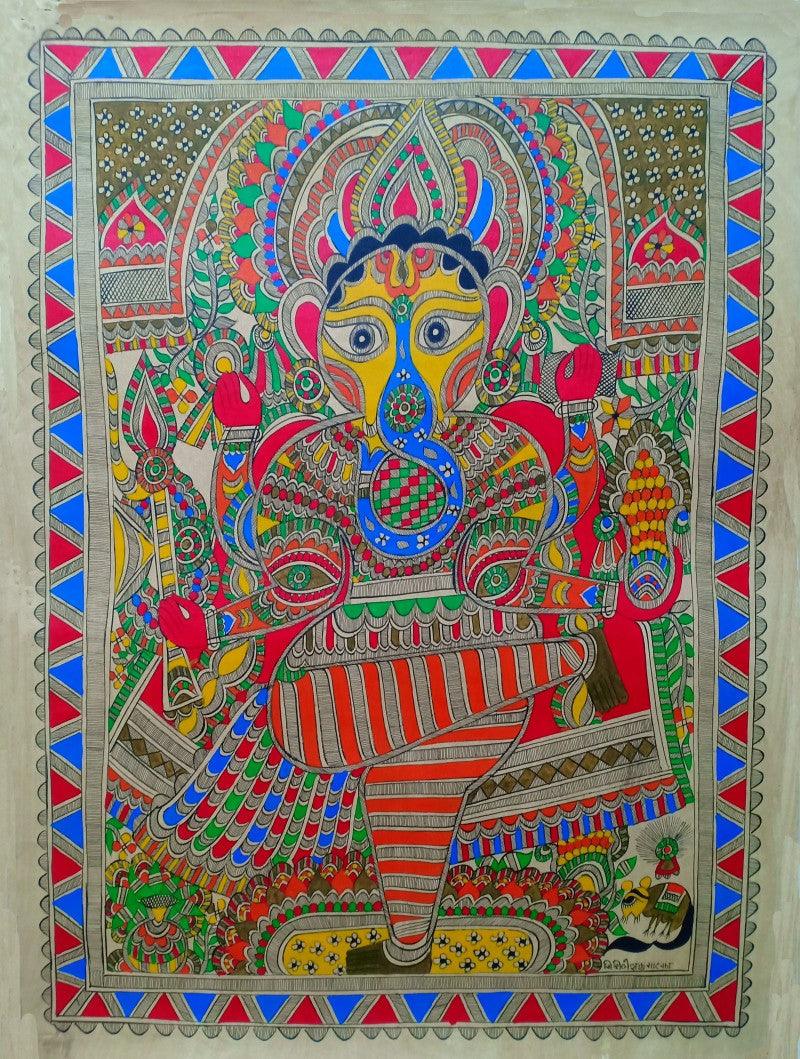Explore the captivating world of Bihar's paintings, from Madhubani art to Patna Kalam and traditional wall paintings. Immerse yourself in a fusion of ancient roots and modern themes, showcasing vibrant colors and rich cultural heritage. Discover Bihar's artistic brilliance today.
With its abundant heritage and artistic treasures, Bihar stands as a living testament to numerous ancient civilizations. The region boasts a distinctive painting style, most notably developed during the Gupta era, reflecting Bihar's profound artistic legacy. While Ajanta paintings influence the new art form, it maintains quiet moderation. It remains connected to the Gupta artistic traditions.
Bihar's paintings encapsulate the essence of its rich history and cultural tapestry. They serve as windows into the past, offering glimpses of ancient civilizations that once thrived in the region. Bihar's unique painting style emerged during the Gupta period, characterized by refined aesthetics and attention to detail. The artistry displayed in these paintings showcases a harmonious blend of grace, precision, and symbolism.
Influenced by Ajanta art, Bihar's paintings exhibit a subtle evolution while retaining their connection to the Gupta era. This artistic continuity allows a deeper exploration of the region's cultural heritage. Bihar's artworks are a testament to the ingenuity and creativity of the artists who crafted them. They capture a diverse range of themes that encompass rural life, mythological narratives, religious traditions, and natural landscapes.
Paintings serve as profound reflections of our history and culture, capturing the essence of our collective experiences. They are artistic manifestations that depict social, religious, and economic aspects of life, unveiling layers of meaning and storytelling. From grand historical events to intimate moments in daily life, paintings offer a window into the past. This allows us to witness civilizations' ebb and flow. Through their brushstrokes and color choices, artists breathe life into ancient stories, preserving them for future generations to unravel. These visual narratives connect us to our ancestors, fostering continuity and cultural identity. With intricate details and vibrant hues, paintings convey the rich tapestry of traditions, rituals, and beliefs that have shaped our societies. This artistic medium serves as a testament to humanity's resilience and creativity, reminding us of our shared heritage and the diverse threads that weave us together.
Bihar's rich artistic tradition has garnered global acclaim, owing to its diverse range of world-class paintings. The renowned Madhubani painting, Patna Kalam, and traditional wall paintings showcase the seamless fusion of modern themes with ancient stylistic roots. This results in breathtaking artwork that captures the imagination. Skilled artists use a wide array of bright and fast colors, such as red, green, blue, and black. They craft visually captivating compositions that leave a lasting impact.
Moreover, these artistic talents employ vibrant shades such as yellow, pink, and lemon, infusing their paintings with a dynamic and energetic quality. Ambika Devi and Sewak Ram, distinguished artists, have received well-deserved recognition as National Award recipients for their remarkable contributions to Madhubani and Patna Kalam artworks. Their exemplary mastery and unwavering dedication have elevated these art forms. This has inspired the next generation of artists to carry forward Bihar's rich cultural heritage with pride.
Bihar's artistic legacy continues to flourish as these painters push creative boundaries, captivating audiences with their imaginative storytelling and evocative visuals. Their artworks serve as a vibrant testament to Bihar's cultural richness and artistic prowess, bridging the gap between tradition and contemporary expression. These masterpieces not only beautify the walls they adorn but also perpetuate the stories, traditions, and aspirations of the past. This ensures their preservation and appreciation for generations to come.
With an awe-inspiring richness, Bihar's painting tradition skillfully depicts the diverse tapestry of natural phenomena, animals, birds, trees, religious beliefs, rivers, special occasions, and captivating figures and scenarios. Passed down through generations, these artworks are lovingly nurtured and practiced in homes, forming an integral part of Bihar's cultural fabric. Each brushstroke and color choice carries the weight of artistic legacy, encapsulating the profound bond between the artists and their environment. From breathtaking landscapes to intricate mythological tales, these paintings serve as visual testaments to Bihar's vibrant creative heritage. Bihar's art is a living tradition, with artists creating works that reflect their culture, values, and beliefs. By preserving and celebrating this art, we ensure that Bihar's artistic tradition lives on and inspires future generations.
India's painting art has embarked on an extraordinary voyage, bearing witness to the profound influence of a myriad of traditions and styles. From the ancient cave paintings of Bhimbetka to the intricate Mughal miniatures and the vibrant folk art traditions, Indian paintings have evolved and transformed. This mirrors Indian culture and history. Each brushstroke and color choice resonates with regional aesthetics, religious beliefs, and the land's timeless heritage. Through their exquisite narratives and captivating aesthetics, Indian paintings stand as a living testament to the cultural legacy of the nation, celebrating its diverse artistic expressions and captivating the hearts and minds of art enthusiasts across the globe. These artistic masterpieces continue to inspire and enchant, bridging the gap between the past and the present. They leave an indelible mark on India's artistic landscape.
“Paintings are vibrant canvases that tell stories and preserve the colors of tradition.”










